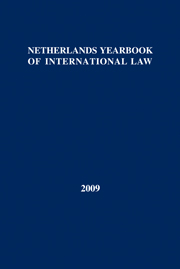Article contents
The Crisis of International Human Rights Law in the Global Market Economy
Published online by Cambridge University Press: 12 June 2014
Abstract
The contribution argues that facticity of the human rights impacts of economic globalisation increasingly undermines the normativity of the state-centred conception of international human rights law. The exposure of the international legal order of states to the operations of global business entities leads to a collusion of sovereign state interest and globalised corporate power at the expense of protecting the rights of victims of human rights violations in the global market economy. The contribution scrutinises two prominent attempts to address this lacuna of protection: transnational tort litigation and the UN Guiding Principles on Business and Human Rights. It is argued that both approaches are not only an expression of the present crisis of international human rights law but also risk contributing to its perpetuation. While the ‘escape into tort’ results in the privatisation of public human rights in the global market economy, the UN Guiding Principles entrench their territorialisation in the state legal order in the face of global economic challenges. The concluding section reflects on the future pathways of international human rights law by positing a choice between, on the one hand, a more radical departure from human rights’ state-centred heritage and, on the other hand, a transformation of the international legal order of states by virtue of human rights. It highlights the importance of extraterritorial human rights obligations in recovering the state's legal accountability for human rights violations committed in the course of global business operations.
Keywords
- Type
- Part I Crisis and International Law: Decoy or Catalyst?
- Information
- Copyright
- Copyright © T.M.C. Asser Instituut and the Authors 2013
- 3
- Cited by


